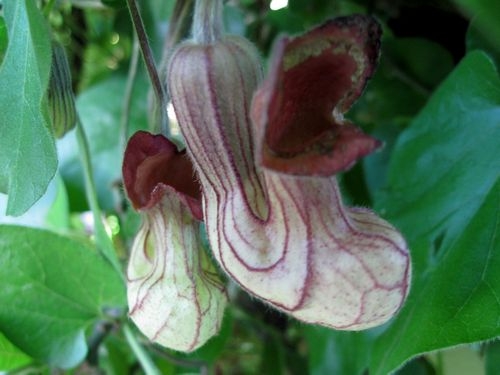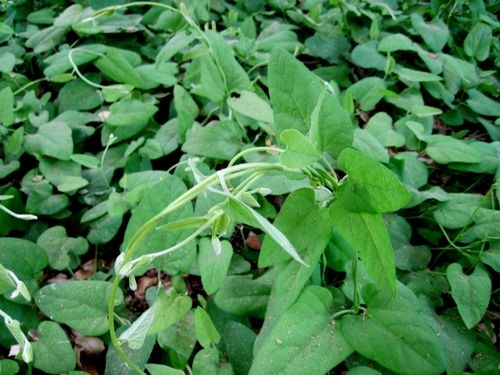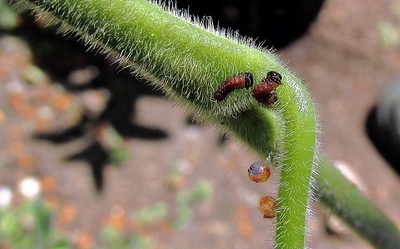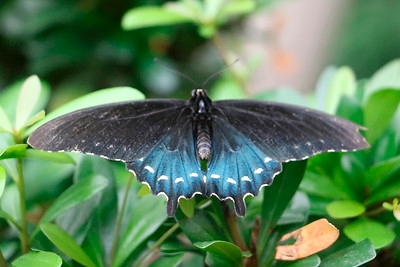Napa Valley has a unique plant growing along its waterways, especially along the Napa River. It is Dutchman's pipevine (Aristolochia californica) and it is native to California. This plant, one of more than 500 in the species, grows only in Northern California and is the larval food of the pipevine swallowtail butterfly.
Pipevine flowers are different from the blooms of other plants. The Dutchman's pipevine got its name because the flowers look like the pipes smoked in Holland. The flowers appear before the leaves, usually in late February, and have a strange way of being pollinated.
Some people think the flowers are meat eaters as they are pollinated by fungus gnats. After a gnat enters the flower, the flower closes. As the gnat moves around inside, it picks up pollen. After three or four days, the flower opens and the gnat moves on to another flower. I discovered this phenomenon when I opened a flower and found a gnat moving around inside.
Once pollinated, the flower produces green fruit with seeds inside. I have collected these seeds and tried to propagate them but it was difficult. The pipevine grows from rhizomes and is equally hard to reproduce from cuttings.
A few years ago I took 20-plus cuttings and carefully tried to grow roots to share with my fellow Master Gardeners. Out of the 20, only a few developed roots. I tried again, keeping the cuttings very moist as if they were growing along a river. Of the three flats I handled that way, I think I got five cuttings to take.
This winter I will try digging up some of the roots. My motto is “try, and try again.”
The plant is a vine with branches that can grow 20 feet long under the right conditions. I saw a pipevine once growing along a small waterfall and it covered the entire bank beautifully. And the butterflies were flying around leaving eggs.
The male pipevine swallowtails have a blue lower wing and the females are dark gray. Both are about the same size as a monarch butterfly.
The swallowtail larvae (Battus philenor) eat the pipevine plant because it makes them taste bad to predators. The female lays small orange eggs in a group of eight to ten so they are easy to find.
For a few weeks of their lives, the larvae graze together and shed their skin as they grow. They take much longer than most butterfly larvae to become pupae. If I move them into the house to mature, I know it is a five-week commitment. I have to clean their droppings out of the container daily and provide fresh food. They are big eaters so I must not forget a day. As they grow from tiny larvae to two inches long, the droppings grow, too, from the size of red pepper flakes to the size of BBs.
Once they are ready to pupate, they take a big dump and go walking. If confined, they go around in circles, but outside they can travel quite a distance. When they find the perfect place, they spin a web to hold them in place and shed their outside skin for the last time. Under that skin is the perfect pupa.
In my experience, monarchs pupae take a little over 16 days to become butterflies. Anise swallowtails and pipevine swallowtails have a different timeline. Some of the pupae emerge in a few weeks and start a new generation. Others overwinter as pupae, and in March, when the leaves of pipevine are appearing, the pipevine swallowtails start to come out. The anise swallowtails did not emerge last summer, but they usually appear in late May or June when wild fennel is growing well.
Pipevine takes a few years to establish itself to the point that it can support the butterfly larvae, so be patient. Once established, the butterflies will find it and start depositing their eggs.
Pipevine is toxic to humans and, if ingested, can lead to cancer or kidney failure. In some countries it is still used as a medicine; however, it is illegal for medicinal use in the U.S. The beautiful pipevine swallowtail relies on the toxin to protect itself from predators.
Become a Master Gardener Volunteer! UC Master Gardeners of Napa County is now accepting applications for the Class of 2023. Click on the ”Join Us” button at napamg.ucanr.edu to read the informational brochure and register to attend a mandatory information session for applicants. Applications are due before 5 p.m. on September 30.
Free Library Talk: UC Master Gardeners of Napa County and Napa Library will host a talk on “Controlling Vertebrate Pests in Your Garden” on Thursday, August 4, from 7 pm to 8 pm, via Zoom. Learn to identify them and use integrated pest management to protect your bounty.
To receive the Zoom link, register at http://ucanr.edu/VertebratePestsLibraryTalk.
Free Guided Tree Walk: Join UC Master Gardeners of Napa County for a tree walk at Fuller Park in Napa on Tuesday, August 9, from 10 am to noon. Space is limited to 12 people and each person attending must pre-register. REGISTER HERE FOR AUG 9 TREE WALK
Got Garden Questions? Contact our Help Desk. The team is working remotely so please submit your questions through our diagnosis form, sending any photos to mastergardeners@countyofnapa.org or leave a detailed message at 707- 253-4143. A Master Gardener will get back to you by phone or email. For more information visit https://napamg.ucanr.edu or find us on Facebook or Instagram, UC Master Gardeners of Napa County.
Attached Images:

Aristolochia californica (calscape.org)

Aristolochia californica- vine (calscape.org)

Swallowtail caterpillar hatchlings and eggs (flickr.com- TJ Gehling)

Swallowtail Caterpillar evidence (flickr.com- BlueRidgeKitties)

Battus philenor Pipevine Swallowtail (flickr.com-David A. Hofmann)

Swallowtail butterfly (flickr.com- greyloch)